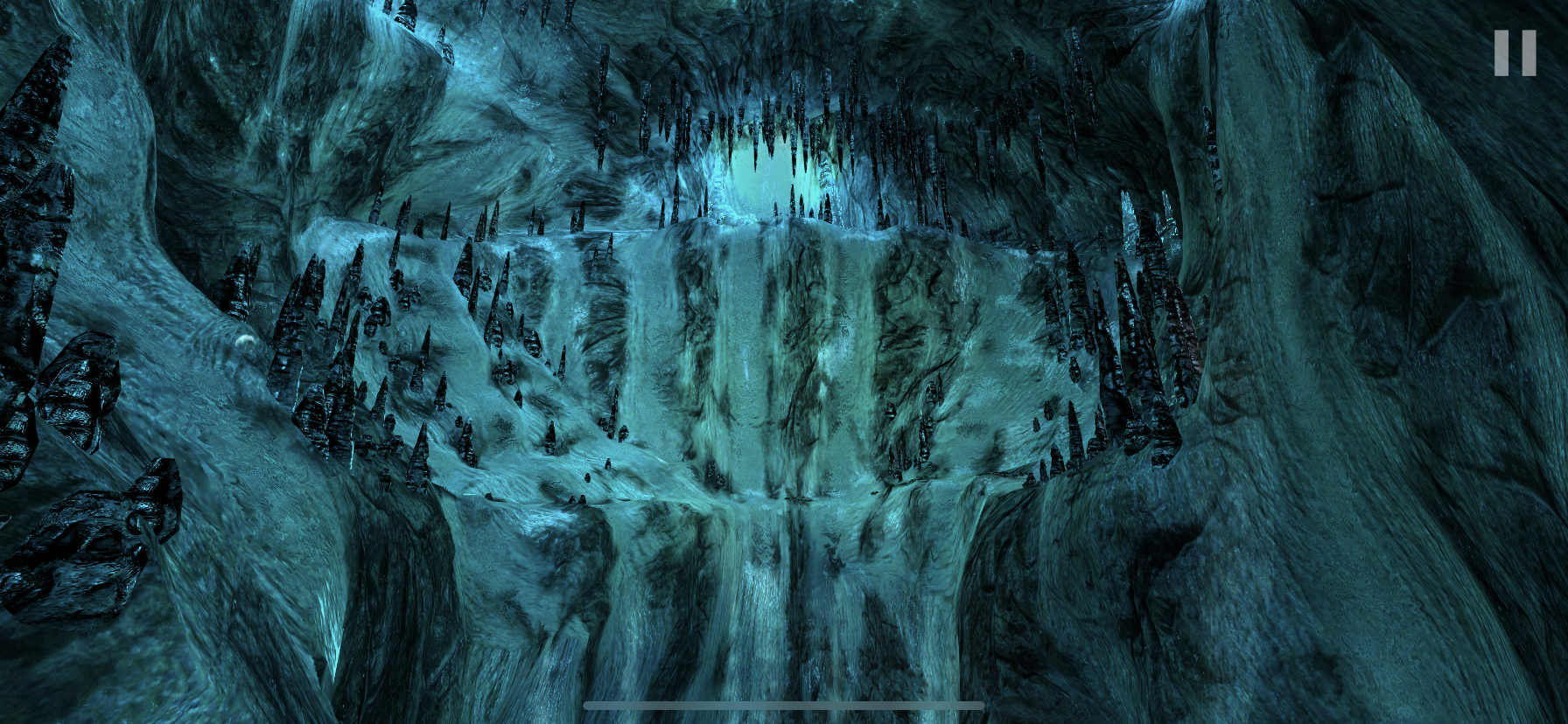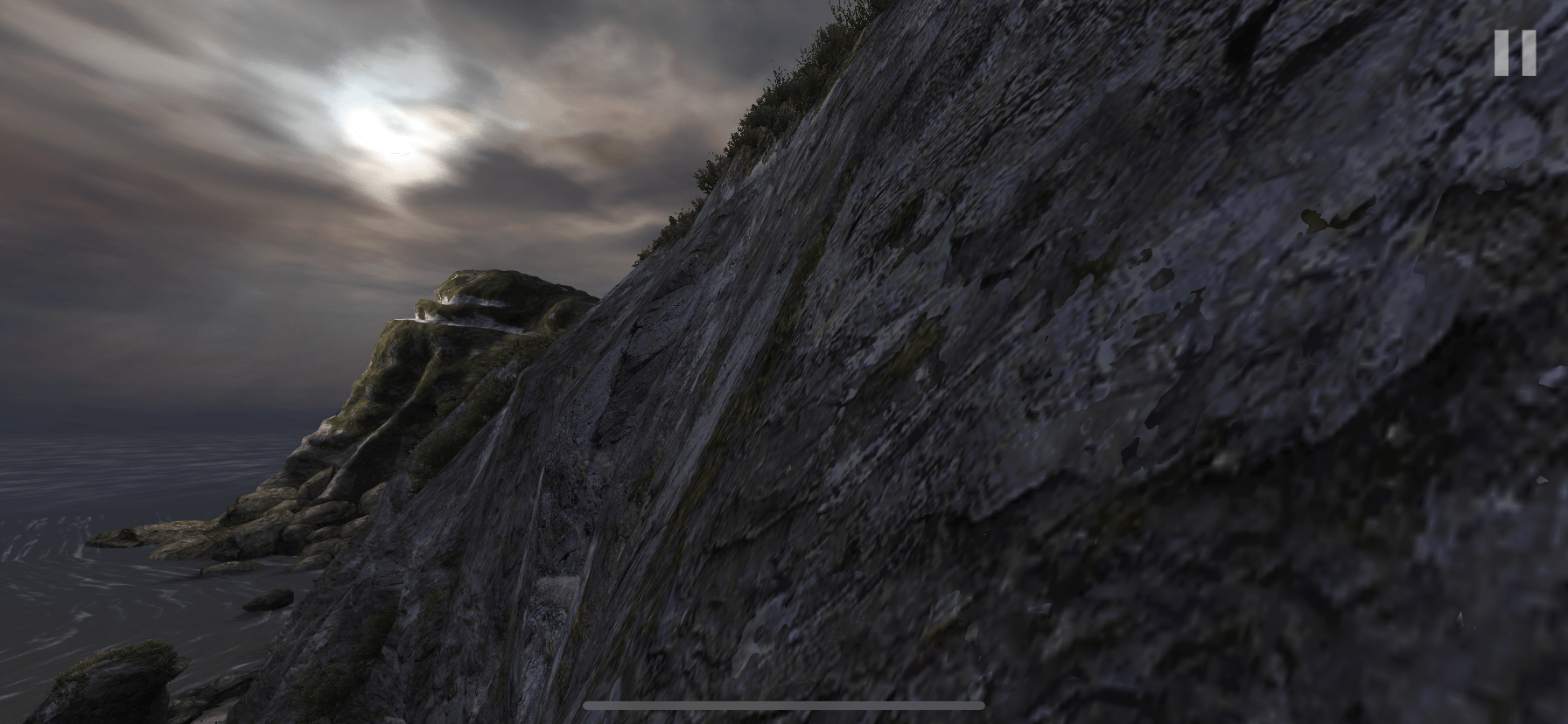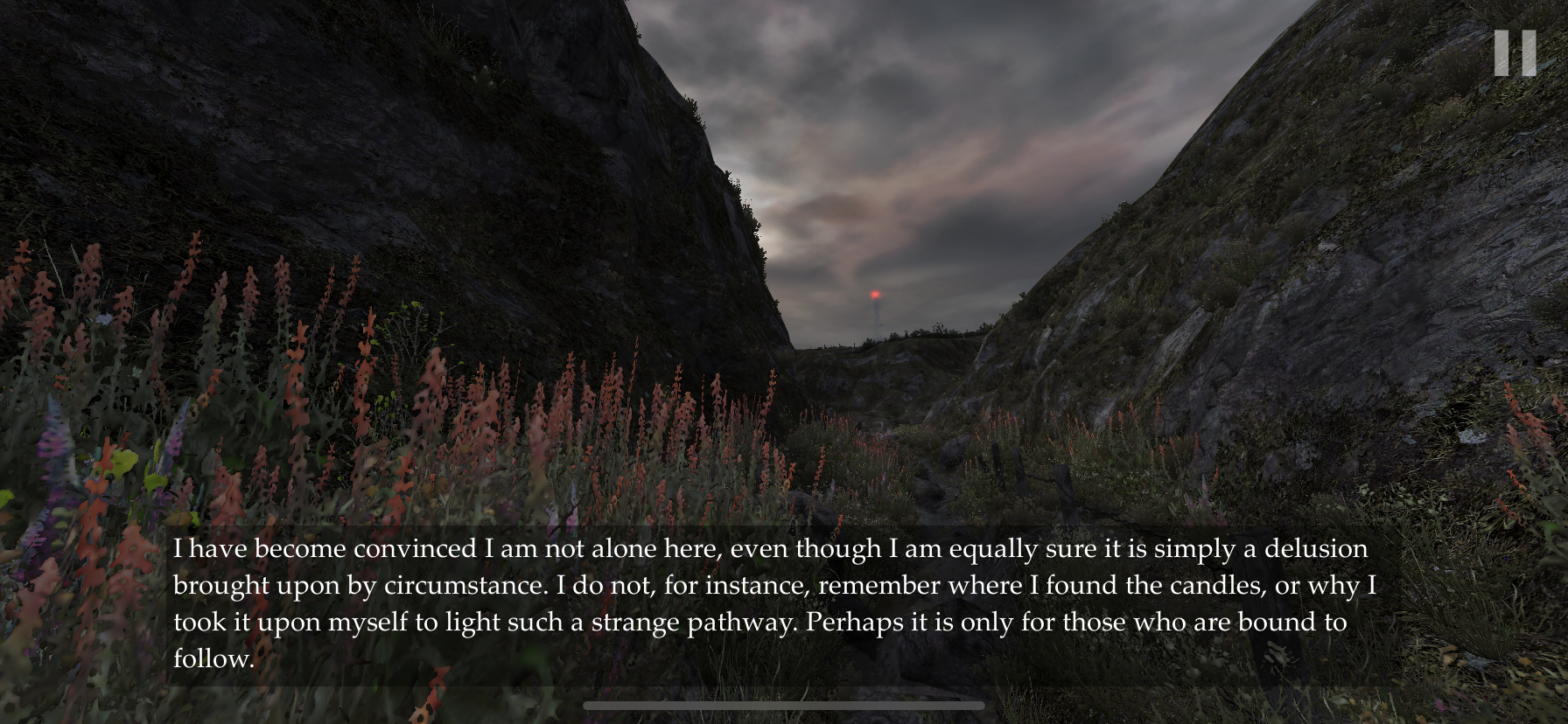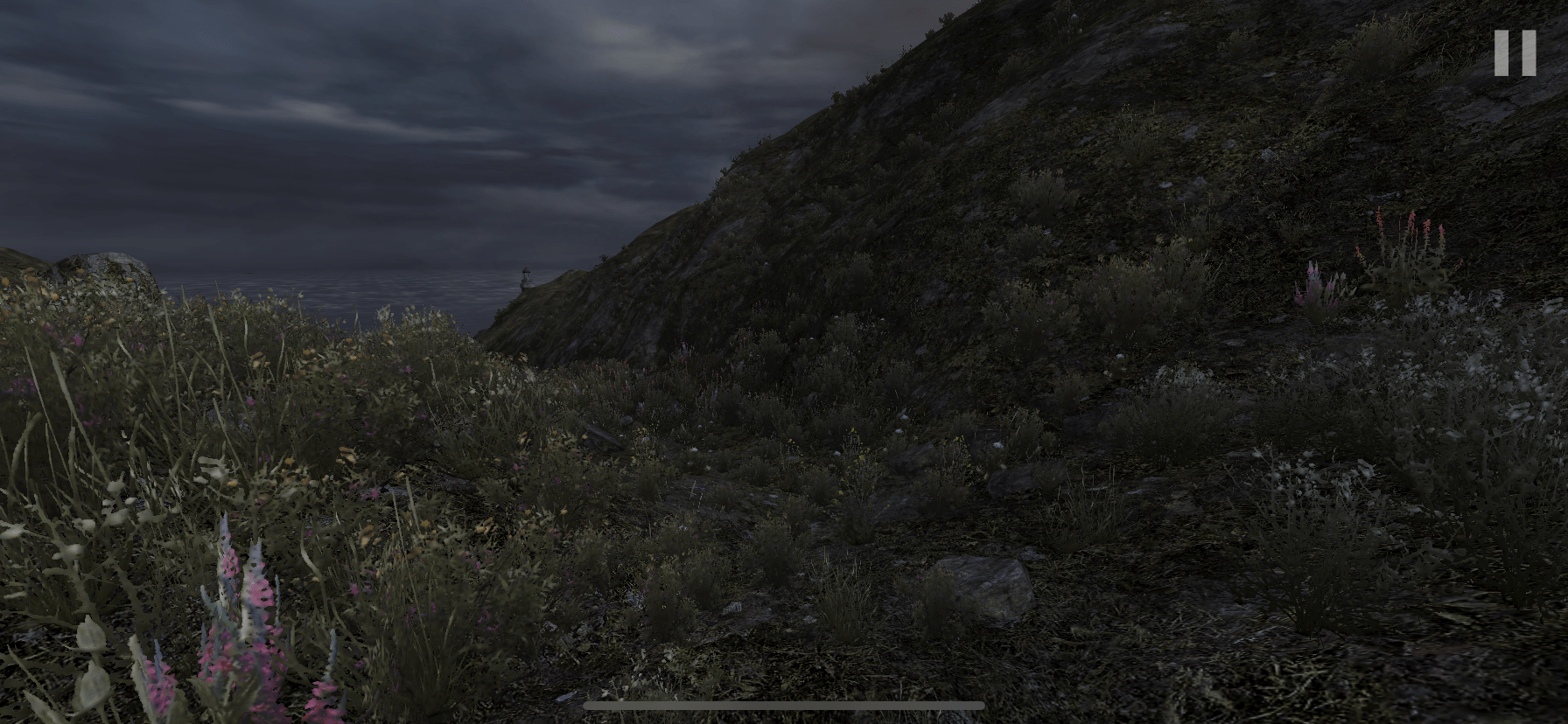About the Game
Wow. What an experience. I played the iOS mobile version of Dear Esther by The Chinese Room and Robert Briscoe. From what I gathered after a couple hours of play (and a great deal of nausea from looking at a moving screen on my small phone for so long), the game is about a wandering explorer with traces of horror, looking back on the past, and pure visual enjoyment.
Here’s one of my favorite moments, when I discovered this epic cave after being outside for so long:

Formal Elements
Players & Roles:
- This is a single-player, first-person game. I felt like I was creating a movie and having a main character moment.
- You are the walker, continuously addressing somber messages that tie in your current state on the lighthouse island with your previous life (which didn’t sound too great, given the kidney stones and other troubles…)
Outcome & Objective:
- I only played a couple of hours, but there were multiple locations on the main menu. I assumed that the local outcome of each location is that you reach the end destination (which is really more about the journey).
- The objective really felt like it was to walk. In a way, I made my own objective as I walked: why did I want to keep looking? How could I piece together the messages? Who was I, and what would I find on this island? Who the heck is Esther?
Rules & Procedures:
- You simply walk through the world and try to find a new part of the location to explore. There are paths that continuously unlock new areas, and others that are dead-ends.
- You have to figure out the physical rules as you go: I found that the game mostly tries to mimic real life — you can’t make physical jumps up a high elevation, if you jump off a cliff you see a blackout to a reset back to where you were (I tried, several times… see picture below for a live photo of me falling), and you can only walk as fast as the game lets you.

Resources & Boundaries:
- The messages that pop up (from myself to Esther) give me fragments that I tried to piece together into a story. I was trying to figure out more about what my background was and how I might get off of this island.
- You are bounded by the size of the island itself (which is huge!) and the different paths — certain areas are walkable and others are not. Something I found difficult was knowing where to walk when either…
A) the text covered up the path, or

B) there was no clearly defined path, just shrubbery.

Type of Fun
First and foremost, this is discovery. My primary intention while playing was discovering new parts of the island. However, I also enjoyed abnegation, a visually stunning escape from the real world. In fact, I stared so hard that I got nauseous.
I can’t say I got the full story, but I let my imagination run wild because I had so much time to think as I walked and took in my gorgeous surroundings. Was Esther a romantic interest or a familial love? Was my objective to get off the island / would I ever get off? Would I ever interact with another “person” in the game? The fact that the game gives you such fragmented pieces of what I assume is the larger story allows me to craft different versions for myself and enjoy the environment; it was quite a cathartic experience.
Something that was somewhat inconsistent was the idea of falling: sometimes, it was unacceptable (like off a cliff) and I was reset back from where I left off. Other times (like into a hole in a cave), it transported me into a whole new cavern. It would be great if falling just let you stumble onto where you would fall (even if it’s wading in the ocean) so that I wouldn’t try to avoid falling later on in the game — if I had avoided the hole, I would have never unlocked the next area.



